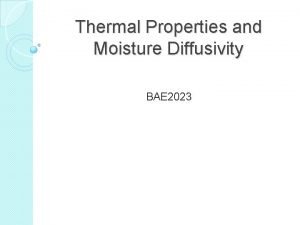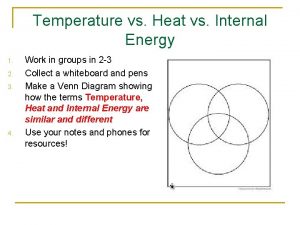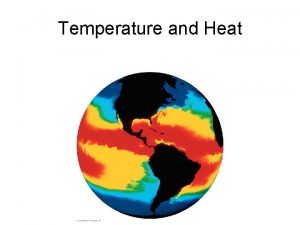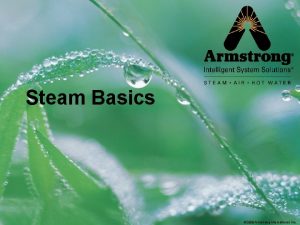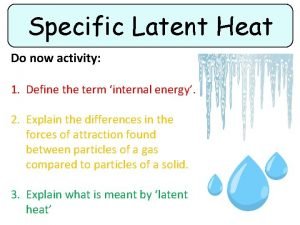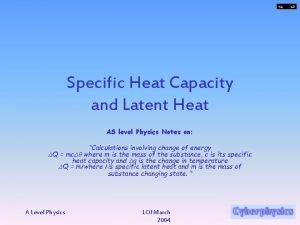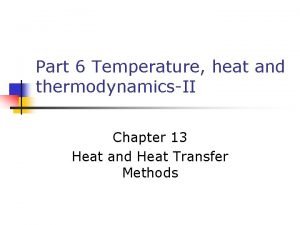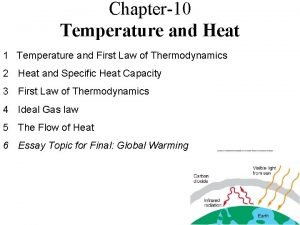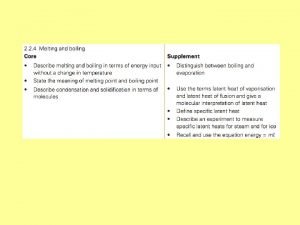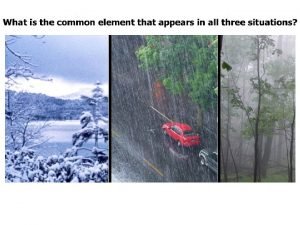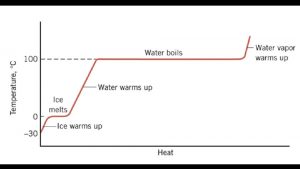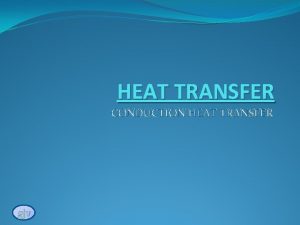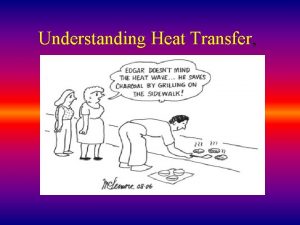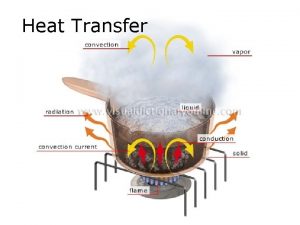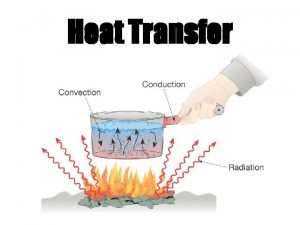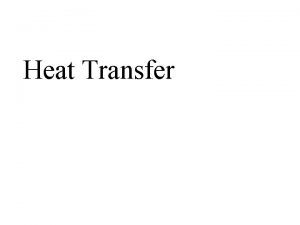Heat Transfer in Weather Systems Latent hidden Heat











- Slides: 11

Heat Transfer in Weather Systems

Latent (hidden) Heat of Evaporation • Conduction, Convection, and Radiation work with “sensible” heat— heat that you can feel. • Latent or “hidden” heat is energy that is involved in heat transfer without changing temperature. • Latent heat is involved in evaporation/condensation and freezing/melting • • Steam from electric kettle Ice cooler Sweat Rain from thunderstorm cools

Sling Psychrometer Demo

Sling Psychrometer • Activity • What is the temperature? • What is the temperature of a wet thermometer? • Why are these different? • Why does humidity alter how hot it “feels”? • Heat Index • “It’s not the heat, it’s the humidity”

Heat Transfer Scenarios • In the Heat Transfer Scenarios handout, there a list of 20 real-life heat transfer scenarios for you to consider. • They are simple at the top and more challenging at the bottom • You might think about some of the others at home or with your mentees….

#1) How can it be that our hands get cold but not the rest of our bodies? • Surface area • Hands have more area over which to transfer heat than abdomen • Clothing • Generally hands are exposed, but abdomen is insulated • Gloves help decrease heat loss • Thickness • Warm blood is closer to skin in hands (than abdomen) so heat transfer is higher

#5) How does a swan stand on a frozen lake in the middle of winter and not have its feet freeze? • Area • By standing on one foot, heat transfer is reduced • Temperature Difference • Blood in foot is cooler than blood in body • 3 part circulation system • Over time, the temperature of the foot gets closer and closer to the temperature of the ice

#15) Do the Bedouins who live in the desert where white or black robes? Why? • Black absorbs more radiation than white • You would think black is hotter • Hot (black) robe increases convection • Pulls outside are up through robe • More air flow cools skin • Robe must be loose fitting • Allows convection • Bedouins wear black robes

#19) Why do you feel cold when you get out of the pool on a 90 F day? How do you eliminate this? • Latent Heat of Evaporation • Water evaporates so pulls heat from your skin • If windy, evaporation is faster and you feel colder • Dry off • Use towel to remove water • This eliminates heat transfer due to evaporation • Cover yourself in plastic • Plastic traps 100% humid air near your skin • Eliminates evaporation

Heat Transfer in Weather Systems • Thunderstorms • Convection due to differential heating by the sun • Sustained by release of latent heat of precipitation and subsequent air rising • Heat Waves • Radiation and lack of heat loss • Adapt by evaporative cooling • Cool your home by reduction of absorption of radiation • Hurricanes • Form by absorbing heat and water from warm ocean • Dissipate by losing energy source • Increase frequency and intensity due to warmer ocean

Heat Transfer in Weather Systems What can you and your family do to keep cool in a heat wave or keep warm in a blizzard? • Conduction • Ground to air • Animal adaptations • Convection • Air rising (thunderstorms, Hadley cells) • House cooling • Radiation • Source of all weather energy (differential heating from the sun) • Hot black asphalt • Latent Heat • Thunderstorm intensification • Evaporative cooling • Adaptations to heat waves

